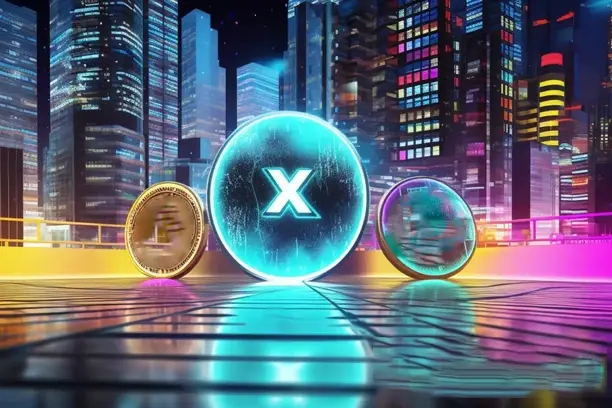How does blockchain mining work? The Nature of Mining Explained in Layman's Terms
Blockchain mining is one of the most basic and important parts of the cryptocurrency world. Simply put, mining is the process of solving complex mathematical problems through the arithmetic power of computers to ensure the security and operational stability of the blockchain network. And in the process, miners are rewarded with a certain amount of cryptocurrency. In this article, we will take you deeper into the working principle of blockchain mining and explore the nature of mining and the mechanism behind it.

Fundamentals of Mining
In the world of blockchain, mining is a computer technology-based endeavor. It is essentially a decentralized process in which each participant (miner) can use his or her own computer arithmetic to maintain the integrity of the blockchain network. Miners verify the legitimacy of transactions by solving complex mathematical problems and pack those transactions into blocks that are eventually added to the blockchain.
The core process of mining
- Transaction Confirmation
When you make a cryptocurrency transaction, that transaction is not immediately added to the blockchain. Miners are tasked with verifying the authenticity of these transactions to ensure that each one is legitimate. - Proof of Work
In order to pack transactions into a new block, miners need to perform a lot of calculations to find a hash value that meets certain conditions. This is known as the "proof-of-work" mechanism. The miner keeps guessing at the hash value until it finds a solution that meets the conditions. - Addition of blocks
Once the miner has successfully found the correct solution, a new block is added to the blockchain. This block contains the transaction data that has been verified. - Incentive mechanism
As a reward for their hard work, miners receive a certain amount of cryptocurrency (e.g. Bitcoin). This is the essence of "mining", i.e. getting rewarded for your computational work.
The value and significance of mining
The decentralization and security of the blockchain is ensured precisely through the mining mechanism. Each miner supports the operation of the blockchain, and their computational power ensures that the transaction records are not tampered with. Mining not only enables miners to earn cryptocurrency, but also keeps the entire blockchain network healthy and stable.
The Role of Mining in Blockchain Networks
- Ensuring decentralization
Mining makes the maintenance of the blockchain network independent of a single centralized institution. Each miner is part of the network and together they ensure the decentralized nature of the blockchain. - Increasing Blockchain Security
Through mining, each block of the blockchain needs to be verified through complex calculations, which makes tampering with any one block extremely difficult. An attacker who wants to tamper with a transaction record would have to recalculate all the blocks in the chain, an almost impossible task. - Facilitating the expansion of the network
As the mining process continues, more blocks will be added to the chain, increasing the length and complexity of the blockchain, thus enhancing the scalability of the entire network.
Challenges and future trends in mining
While mining plays a vital role in blockchain networks, it is not without its challenges. As blockchain networks continue to evolve, mining faces increasing technical requirements and stronger arithmetic needs. Competition for mining on a global scale is also becoming increasingly fierce.
The Challenge of Mining
- The competition for arithmetic power is fierce
As more and more miners join the network, the competition for arithmetic power becomes fiercer and fiercer. Miners need to constantly upgrade the performance of their hardware devices to stay ahead of the competition. - Energy consumption issues
The mining process requires a large amount of computational resources and is therefore accompanied by high energy consumption. According to statistics, the annual power consumption of bitcoin mining worldwide is almost comparable to that of some small countries. This high energy consumption problem has raised environmental concerns. - Hardware requirements are increasing
As mining becomes more difficult, miners need to keep upgrading their hardware and investing more money. The development of new mining machines and the continuous advancement of technology have also pushed the mining market into a more efficient and sophisticated stage.
Future Trends in Mining
- Transition to green energy
Faced with the problem of energy consumption, more and more miners are turning to the use of green energy (such as solar, wind, etc.) for mining. By reducing energy costs and minimizing carbon footprints, green mining has become an important trend for future development. - Innovation and development of agreements
With the continuous evolution of blockchain technology, more and more alternative mining mechanisms (e.g., Proof of Stake PoS, Delegated Proof of Stake DPoS, etc.) are gradually proposed. Compared with the traditional proof-of-work mechanisms, these new mechanisms may be more energy efficient and effective, and can also solve many of the problems currently faced by mining. - The Rise of Mining Pools
With individual miners struggling to mine for rewards on their own, mining pools have become a more common form. Mining pools are where multiple miners join together to mine together through collective arithmetic, and then the rewards are distributed according to the arithmetic contributed. The rise of mining pools has allowed more small miners to participate in the process and has increased the efficiency of mining.
How can I participate in blockchain mining?
Participating in blockchain mining doesn't need to be overly complicated for the average user. You can invest by buying a mining machine, joining a mining pool, or even using a cloud mining service.
Mining Methods
- Personal Mining
If you have enough hardware resources, you can choose to mine independently. You need to buy a high-performance mining machine and configure the appropriate software to connect to the blockchain network. - Join the pool
If you don't want to bear excessive hardware costs and computational pressure, you can choose to join a mining pool. Mining pools work together to complete mining tasks by pooling the arithmetic power of many miners, and rewards are distributed according to the contributed arithmetic power. - cloud mining
Cloud mining refers to mining by leasing the arithmetic power of a cloud computing platform. Users don't need to buy and maintain their own hardware to enjoy the benefits of mining.
summarize
Blockchain mining is not only the foundation of cryptocurrencies, but also the key to supporting the decentralization, security and scalability of blockchain technology. Although mining faces many challenges, including arithmetic competition and energy consumption, the emergence of green mining and new mining mechanisms will bring a more sustainable future for the industry as technology develops. For the average user, understanding the nature of mining and how to participate is an important step into the world of cryptocurrency.







